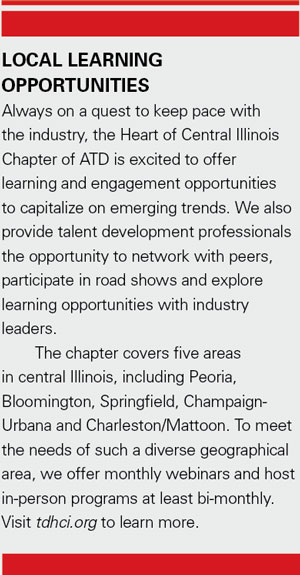How to make learning “sticky” and attract the next generation…
What if you could pull out a crystal ball and determine where the learning industry is trending? Wouldn’t that be amazing? Would you want to know what is on the horizon? I believe most of us in the learning industry tend to be “need-to-know” personality types, so typically the answer is a resounding “YES!”
On a quest to find out where the learning industry is heading, we found an article by instructional designer Tim Coffey which shed some light on the topic. (The full article, published by eLearning Industry, is available at elearningindustry.com/2017-instructional-design-trends-compass-accu-learningcast.) Here are a few of those insights:
Personalization in Instructional Design
The time we spend on our mobile devices is increasing—that is no shock to anyone. We use them to stay “connected” to our friends and family (hello, Facebook!). We can work, Skype and host online meetings, all from a convenient device no bigger than a graham cracker. More than ever, the apps on our smartphones are our home away from home.
As Clare Dygert, manager of instructional design at SweetRush, notes, “[Facebook] knows what I like, who I am, what I’ve done, and what I’d be interested in. Then I come to work and take an eLearning course that’s nothing like Facebook, on a system that doesn’t know who I am, doesn’t understand what I want to know about, and doesn’t have any information about me.” Sound familiar?
Personalization is what makes social media so “sticky”—a term we heard a lot from gamification guru Monica Cornetti when she visited Bloomington earlier this year for Gamification Level 1 Certification. That “stickiness” is largely missing from most eLearning and learning management systems.
Millennials and Values-Based Culture
With over 92 million of them in the workforce, Millennials represent the largest generation in history. They grew up online, and their values and behaviors are different from other generations. Digital is not just technology to them—it is simply a part of life.
A Millennial friend of ours (Let’s face it, we are so out of this category!) was recently asked how she would go about acquiring car insurance. Her response: online, of course! She didn’t want to speak to a person; she wanted to shop for value on her terms, on her time and in her way. Completely autonomously.
Millennials have definite opinions about how they want to conduct business and who they want to work for. They want to work for a company that reflects their values and offers training and advancement. That means employers need to create a strong culture to attract Millennials—and they need to adequately communicate that culture.
Learning and Talent Development Across Generations
What does all this mean for learning and talent development? Our initiatives need to be mindful of the changing needs of learners, no matter which generation they fall into. We must meet learners on their terms, delivering what they need to know, when they need to know it. This is what will make learning “sticky” for them.
We need more personalization, more “personal” learning experiences, more culturally aware opportunities, more hands-on experiential learning—more, more, more!—delivered at the learner’s pace. Potential employees aren’t just searching for salaries anymore. They want opportunities to learn and grow with their organization. iBi
Pamela O’Neal is president of the Association for Talent Development, Heart of Central Illinois Chapter (ATD-HCI) and works for State Farm in Information Security Architecture. Sarah Harris is a performance and learning consultant at CEFCU and director of administration and finance for ATD-HCI.


